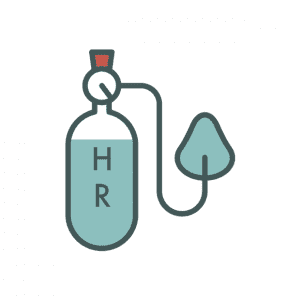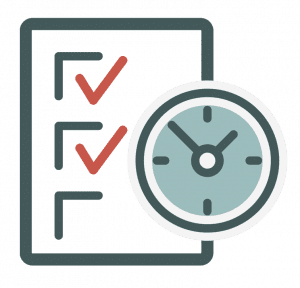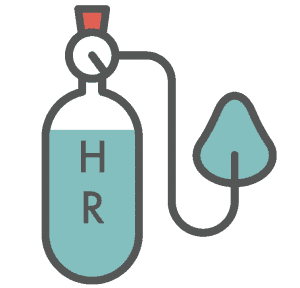We are often asked to discuss the topic of employee ‘check-ins’ (or one-on-one meetings, progress meetings, sit-downs, etc.) with our clients when we meet with them or visit them. Why is this you may ask? Well, it doesn’t matter how experienced you are, many managers don’t enjoy doing them, don’t feel they have good meetings with their team members, or simply dread all the paperwork that goes with them!
No matter what you call them, increasing the frequency and quality of employee performance conversations remains a priority for many companies today and for most of our clients. Some companies have mandated weekly employee check-ins, some schedule them as needed, others ask managers to ensure meetings are complete after every project, and other companies schedule formal check-ins throughout the year. Regardless of the frequency of these conversations, their purpose remains the same: Keep the lines of communication open between managers and employees in order to engage and manage performance effectively.
The more often that employees and managers talk, the better they will be able to work together to accomplish goals, develop skills, and give/receive feedback. Although “check-ins” should appear relatively casual to employees, managers should follow some form of structure to ensure this time spent remains valuable and drives action.
We thought it would be handy to prepare a checklist of discussion points and conversation starters that managers could use to make the most of check-ins with employees, as April is often a time for managers to review the past financial year’s performance and set some new goals or objectives for their teams.
Before the meeting: Prepare
Nothing is worse than going into a meeting with a manager that comes off as uninvested or unprepared. Take 5 minutes to prepare before the meeting. Managers should easily access and skim past meeting notes and performance if you are using a central location or tool for goal tracking, feedback, and/or journal/meeting notes.
- Review any notes taken during the last meeting to get up to speed on any planned deliverables.
- Review the employee’s list of goals and projects to see if there are any due or running off course.
- Make a note of important department or company changes that should be discussed.
- Review any feedback sent/received to identify any discussion points.
- Unplug from other activities so the employee knows they have your complete focus.
During the Meeting: Possible Discussion Points
The bonus of frequent check-ins with employees is that managers don’t need to open a fire hose in every meeting. They can select specific goals, projects, or coaching points to focus on in each meeting. Employees might also start the conversation and guide the focus (even better).
Generally, managers and employees should prioritise discussion points based on due dates and progress. What is discussed will change meeting by meeting. There are plenty of examples here to get your employee talking, but don’t use all of them!
- Use open-ended questions to keep them talking
- Let the employee steer the conversation but make sure you discuss any essential items
- Goal/Project Updates
- Discuss the status of short-term goals and long-term projects
- Adjust/update existing goals with the employee
- Discuss any challenges or lessons learned
- Offer coaching and/or assistance for any roadblocks
- Discuss if any other priorities might affect the goal progress
- Ensure all goals are still on track
- Acknowledge any milestones or accomplishments
- Discuss/confirm any new goals for the employee
- Acknowledge recent accomplishments and provide feedback
- Ask the employee for any examples of their recent accomplishments
- Discuss any training items due/in progress
- Ask the employee if there are any training requests
- Ask if the employee feels they are getting enough feedback
- Ask if the employee is learning from peers/mentors or if they would like to
- Recommend training items to improve skills and further career
- Discuss how training is/should be executed
- Company or Team Updates/News
- Discuss any vital company/team updates or news
- Confirm any action items needed
- Employee Ideas/Requests for change
- Ask the employee for any ideas/input
- Discuss any areas needing change (company, team, project etc.)
- Ask the employee if your management style is effective for them and get suggestions for change
- Discuss any overall roadblocks or distractions that might be affecting the employee
- Employee Career Development
- Discuss employee’s career goals
- Discuss how you can work together to achieve their career goals
- Discuss opportunities and career paths for the employee
Conversation Starters: Keep Them Talking
Some employees are more reluctant to speak up, but this doesn’t mean that a manager should do the bulk of the talking. There are simple ways to get the employee to engage and keep talking during the check-in meeting. Remember, this meeting is about them. The more they contribute to the conversation the better. Here are some open-ended questions to get employees talking:
- Tell me about your week/month – what’s it been like?
- Tell me about what you’ve been working on.
- Where do you think I can be most helpful?
- Are you on track to meet the deadline?
- What areas are ahead of schedule?
- What questions do you have about this area of responsibility or project?
- How are you going to approach this?
- What have you learned about this area of responsibility or project?
- What didn’t go as you had hoped? Why?
- What can you/we do differently next time?
- What suggestions do you have?
At the End of the Meeting: Summarise
Before the employee leaves the meeting, spend a few moments summarizing the key discussion points. This will help remind employees of any action items and reinforce any acknowledgment or coaching tips provided. Ask the employee if anything was missed and remind them of when the next meeting will be.
After the Meeting: Document
This small step is significant and often skipped over, but it can make a big difference. Take 2-5 minutes after each meeting to record key discussion points, action items or feedback. This will help kick-start the next meeting and serve as a useful log when managers need to review performance trends. Keep these notes in a centralized location. A performance feedback and journaling tool like emPerform tag can serve this purpose nicely.
We polled our clients and found that managers who made 1-2 notes about each employee per month shaved 50% of the time off of entering year-end comments during the annual review. That is because they aren’t sitting trying to remember key milestones or trends in behaviour).
How Did You Do?
Take a few moments after each meeting to evaluate how you did. Even the best managers should strive to improve their communication and meeting skills.
- Did you talk too much/not enough?
- Did you actively listen?
- Did you ask questions?
- Did you acknowledge the employee’s feelings?
- Did you paraphrase essential items to confirm understanding?
- Did you provide practical coaching tips?
- Were you distracted in the meeting?
- Do you feel the meeting was valuable?
- Did you discuss all the critical points?
- What could you do to improve the next meeting?
Overall, frequent check-ins with employees are a must to ensure clarity, provide coaching, and offer the support needed for an employee to succeed. Although finding time in the day can be a challenge for many managers, check-ins are time well spent and will pay off in the long run for the manager, the employee, the team, and the company.
How can we help?
We have worked with many of our clients and their employees to create a bespoke review process, that works for them. So why not get in touch to see how we can help you create a simple, engaging and effective review process that encourages great discussions and action. Book a call here.





















